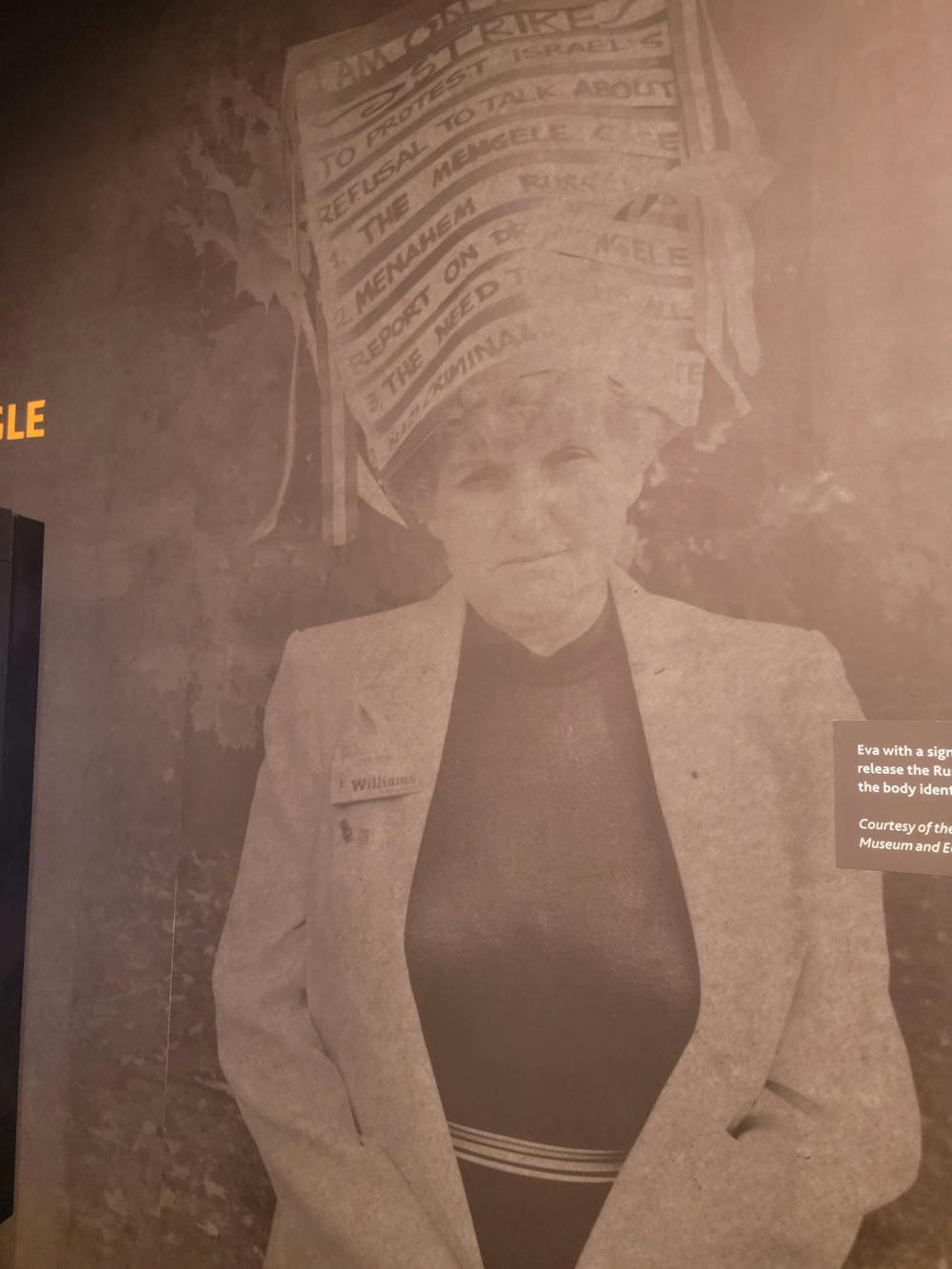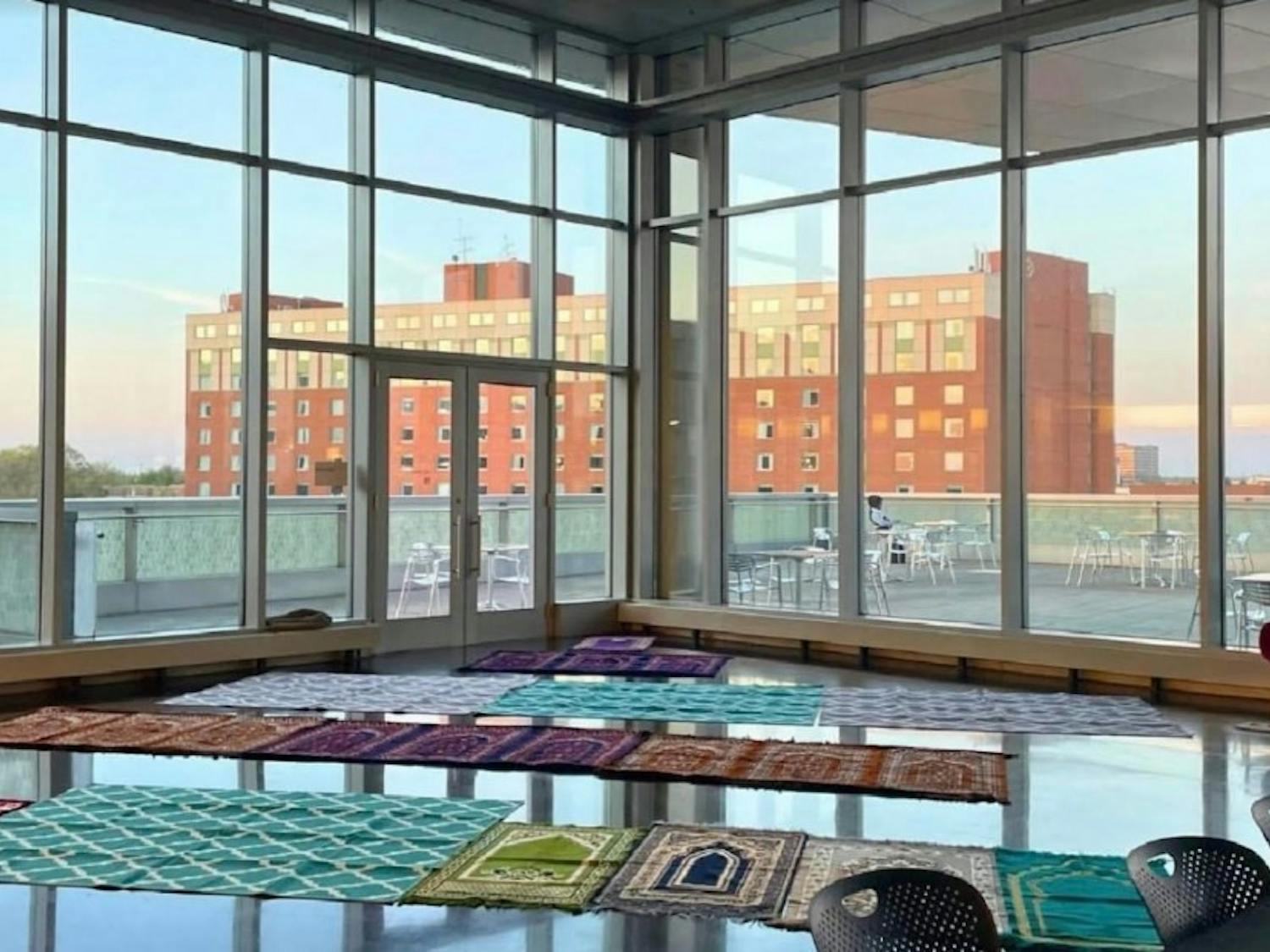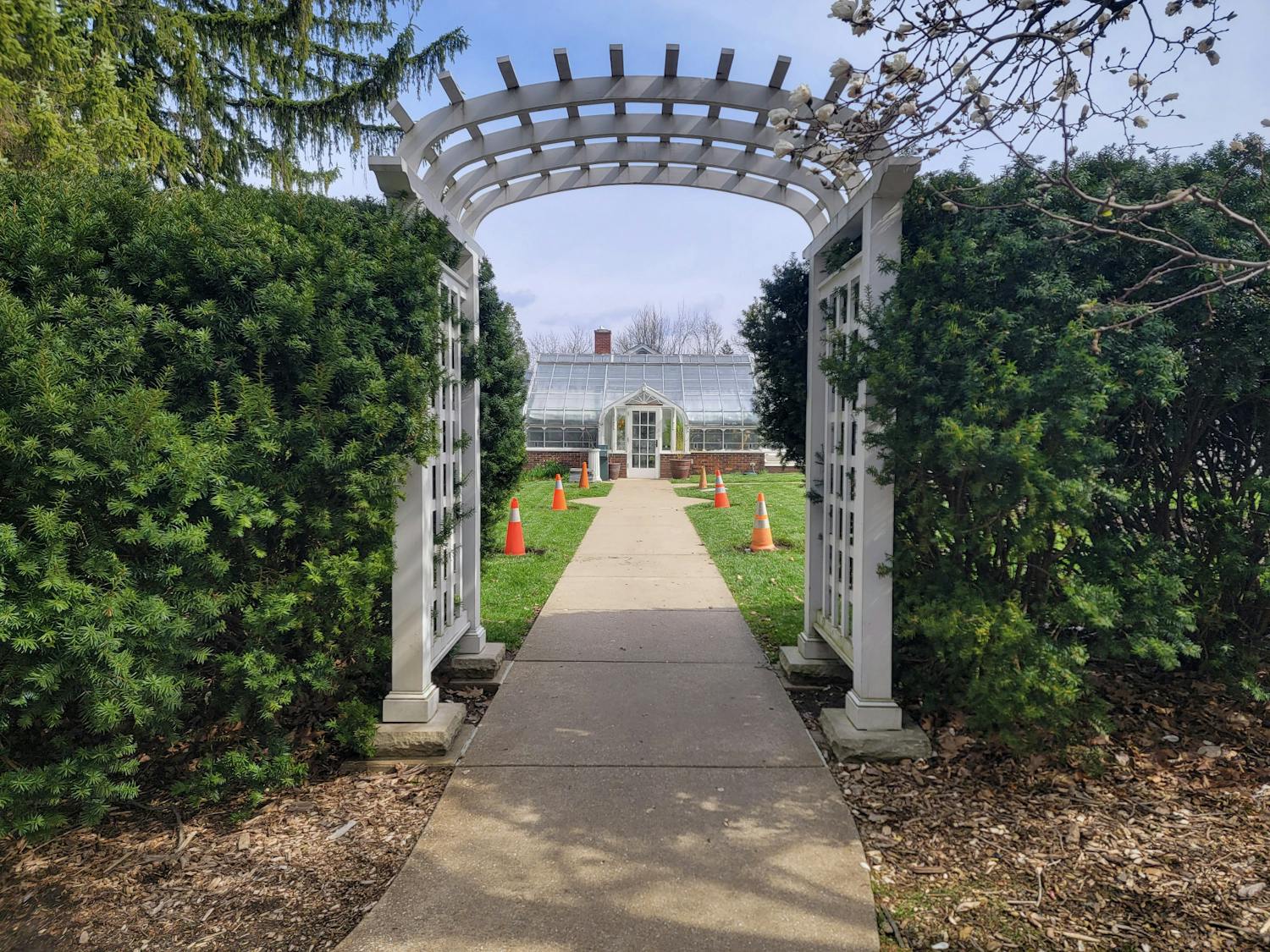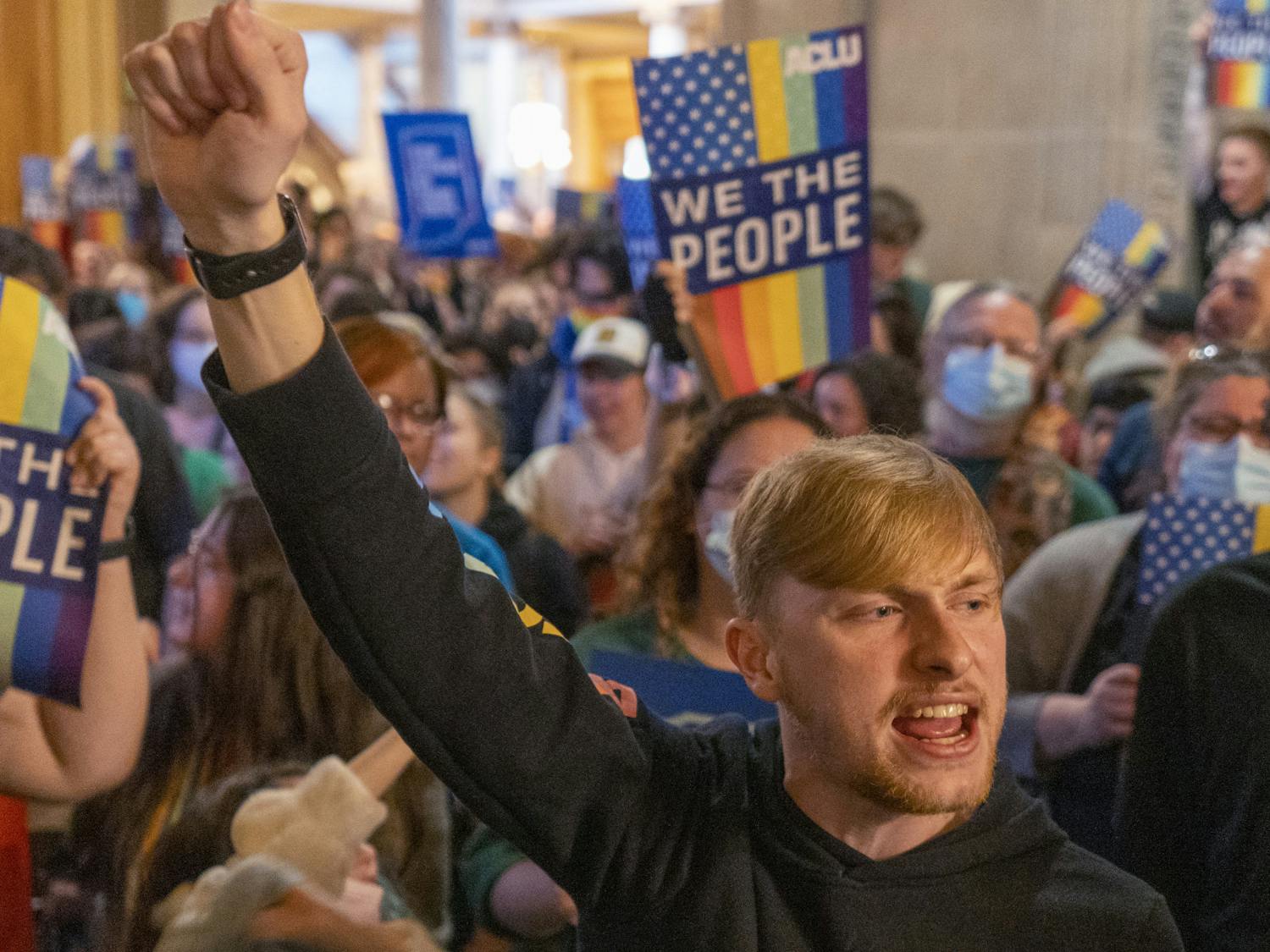Antisemitism, or Jewish hatred, can be traced back to the third century. This racial hostility toward the Jewish community has been a consistent theme throughout history, and perhaps the largest and most well-known antisemitic period is the Holocaust.
The Indiana Historical Society museum in Indianapolis is bringing awareness and remembrance towards the recent revival of Jewish hatred with their new exhibit, “Eva Kor from Auschwitz to Indiana.” Eva Kor, Auschwitz survivor and Jewish activist, voices her experiences in the concentration camps and how these persecutions forever changed her life.
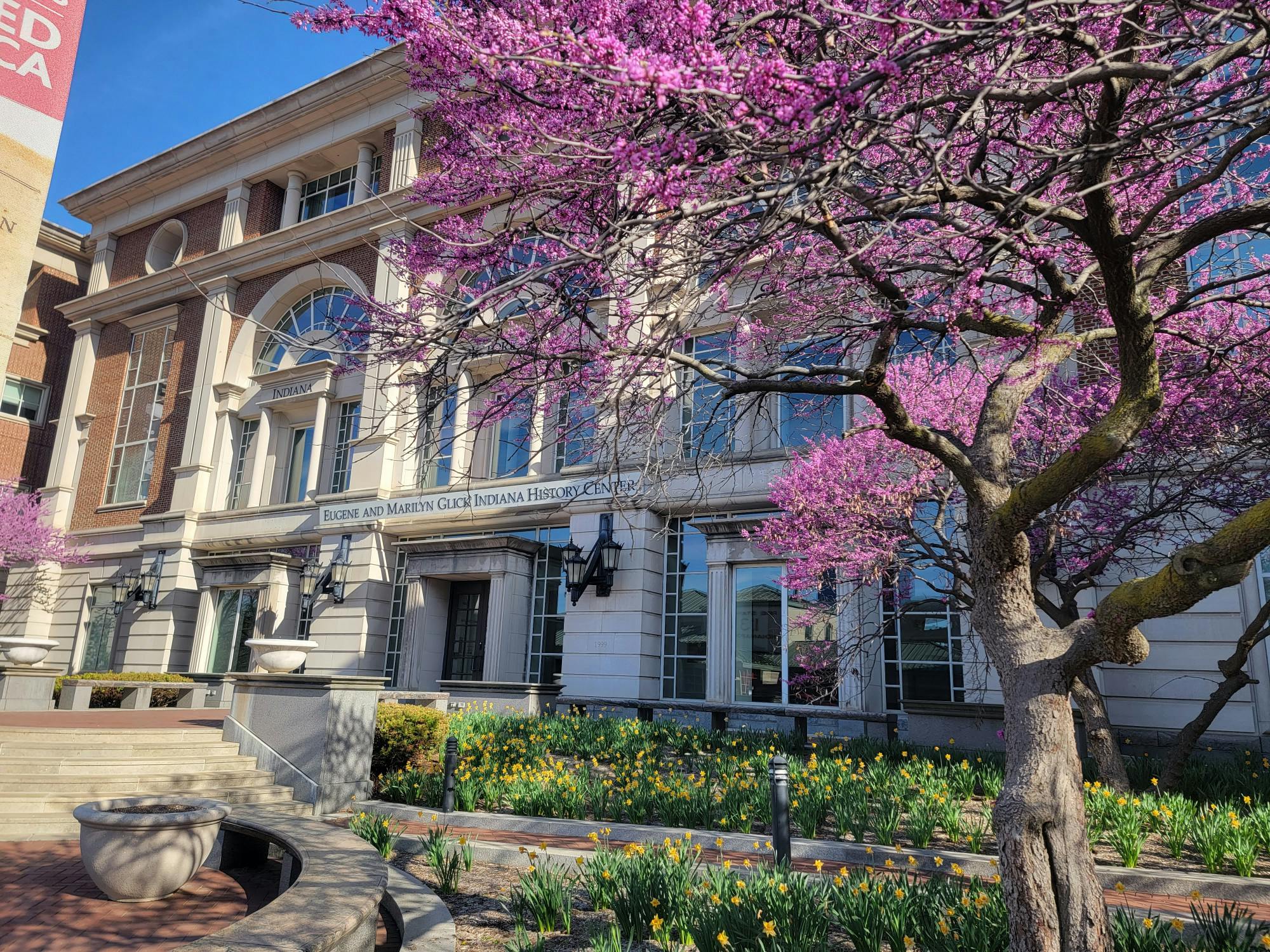
The exhibit is available until August 3 for a $15 admission fee and offers visitors a chance to experience Auschwitz with Kor’s voice as the guide. She passed away in 2019, so her voice is pre-recorded for listeners to appreciate.
Visitors also have the opportunity to interview Kor through a holographic experience, where she will try to answer any questions you ask her. The interview was conducted before her death on her experience surviving the holocaust and being involved in the twin experimentations. Participants can sit in front of the holographic image and ask Kor questions she will answer to the best of her abilities.
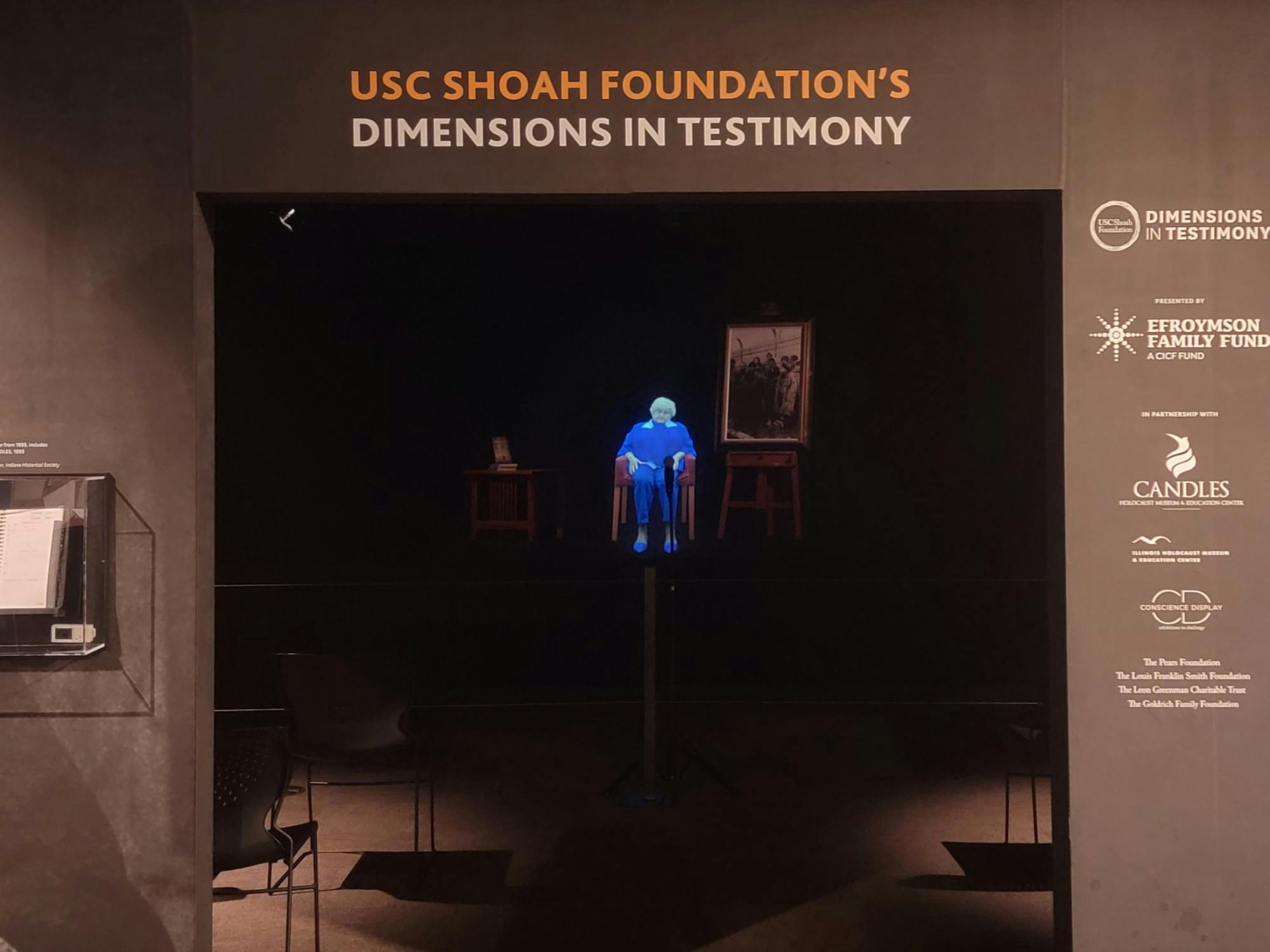
Besides this interactive experience, the exhibit also shares the story of who Kor was and why her story matters.
Kor was born in 1934 alongside her twin, Miriam, in Romania. She begins the exhibit by sharing the separate stages leading up to her family being placed in the concentration camps. Some of the persecution Kor remembers from her childhood is being forced to watch films such as “How to Catch and Kill a Jew” and the targeted attacks from the teenage boys of her town who would throw tomatoes at their house.
This persecution quickly transitioned into ghettoization, where the German troops gathered the Jewish community, took them from their homes and rehoused them in a town segregated from the rest of society, which Kor described as a field surrounded by barbed wire.
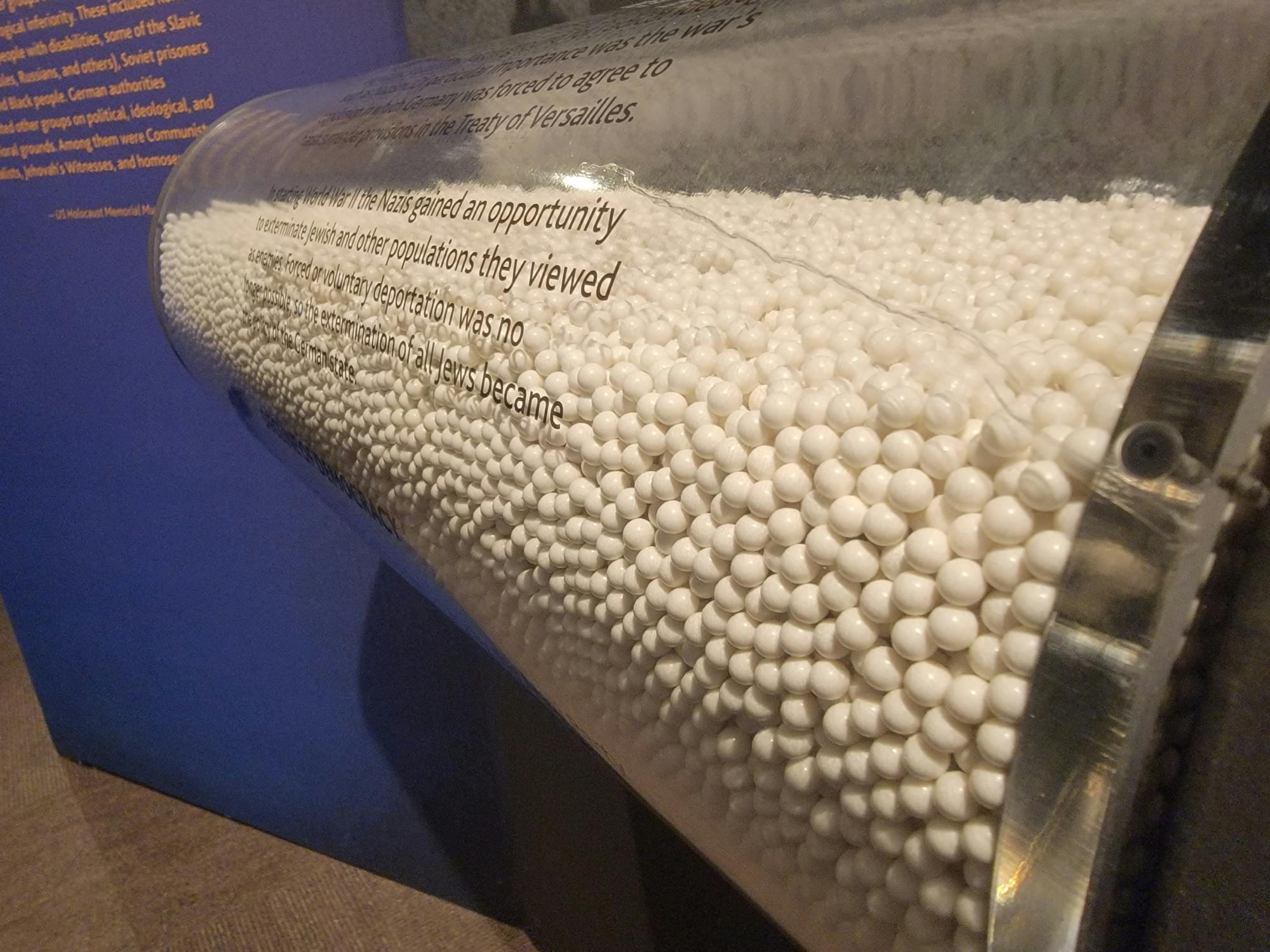
Relocation came once more when Kor’s family, consisting of her father, mother and three sisters, was placed in the Auschwitz concentration camp. This camp is described as the largest and most lethal death camp. Eighty-five percent of people sent to this concentration camp died while there. Eva Kor and Miriam would be the only members of her family to survive this concentration camp.
While at this camp, Kor and her sister, because they were twins, suffered from experiments performed by camp doctors who would often inject prisoners with diseases and mutilate their bodies. Miriam later developed a severe illness from these experiments, needed a kidney transplant from her sister, and died in 1993 from kidney cancer.
The museum also shares Kor’s transition from the concentration camps to Terre Haute, Indiana, where she would later relocate. After being freed, Kor and her sister settled in Israel with their aunt. At 18, she joined the Israeli military as a draftswoman and served for eight years. While in the army, she met Michael Kor in 1960, an American tourist who had also suffered in the concentration camps. They married, and Eva Kor relocated to Terre Haute, where her husband had been living.
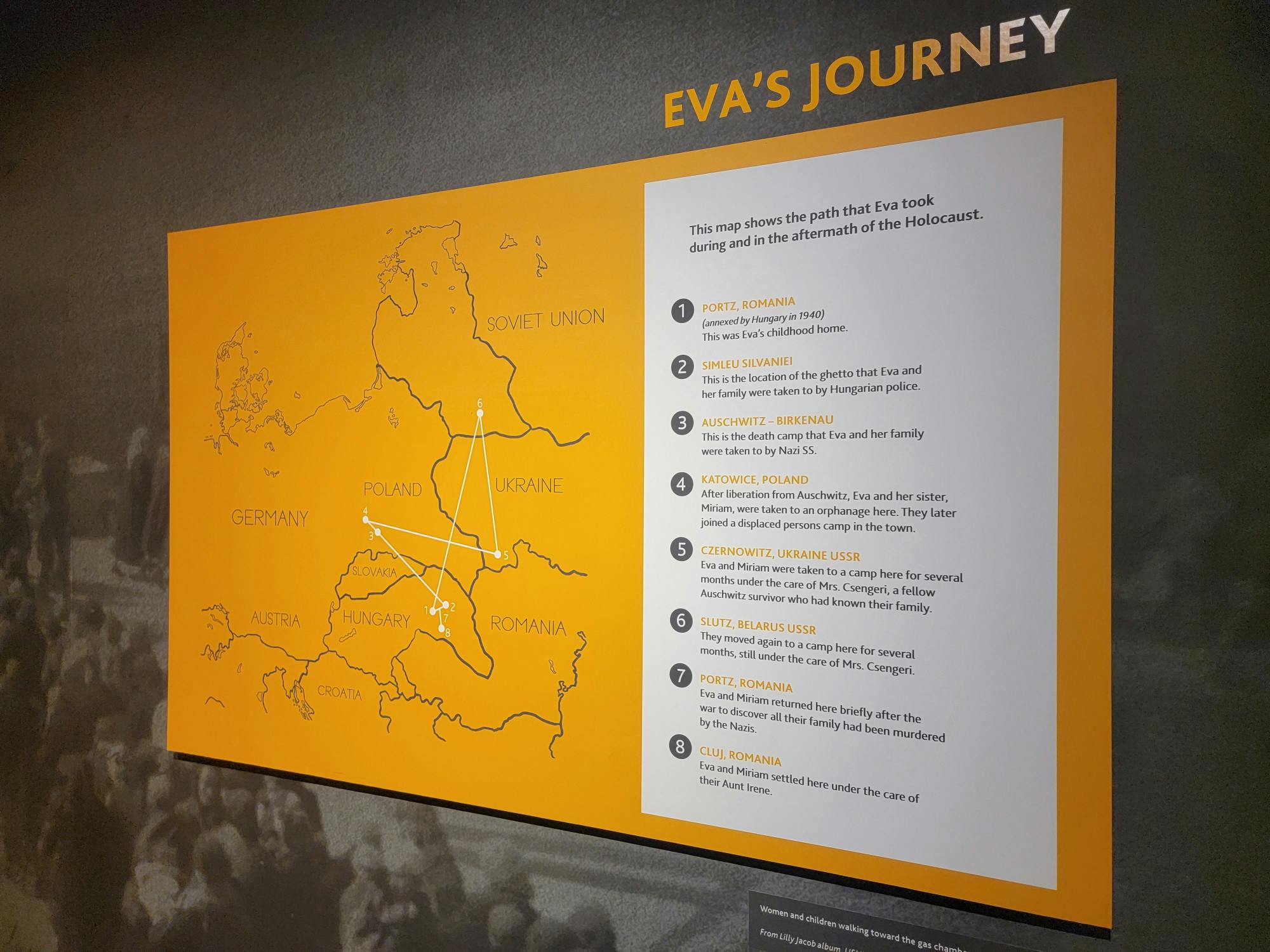
But just as antisemitism is a significant issue today, it was the same in 1960s Indiana. Kor remembers one Halloween, particularly when “Go home, you dirty Jew” was written on their house. Another harassment Kor remembers is corncobs and rocks being thrown at her house.
“It brought back so many memories,” Kor said.
Other information that the exhibit has to offer is the inspiration behind one of Kor’s most significant accomplishments, the formation of CANDLES. CANDLES, Children of Auschwitz-Nazis’ Deadly Lab Experiments Survivors, sought to bring awareness to the experimentation in these camps and the horrors that these survivors had to face. She chose the name CANDLES because she wanted to bring light to the hidden and dark chapters of the Holocaust period.
As a result, Kor built a museum to commemorate and educate on this foundation in Terre Haute. Unfortunately, however, the first museum was burned down in 2003 by an arsonist.
“I have no doubt that I will rebuild this building,” Kor said at the time. “Even if it costs me every last penny. I won’t let evil triumph.”
Kor rebuilt the museum in 2005 with the community's help, and it is still the only Holocaust museum in Indiana.
Her forgiveness is another central portrayal in this museum exhibit. On display are two letters Kor wrote to her parents shortly before her death. Each letter shares her battle with forgiving them for the pain she endured. She shares some of the resentment she felt from her father for being born a girl and anger towards her father for not listening to her warnings to escape to Romania. In these letters, she details how she forgives them and lets go of the pain.
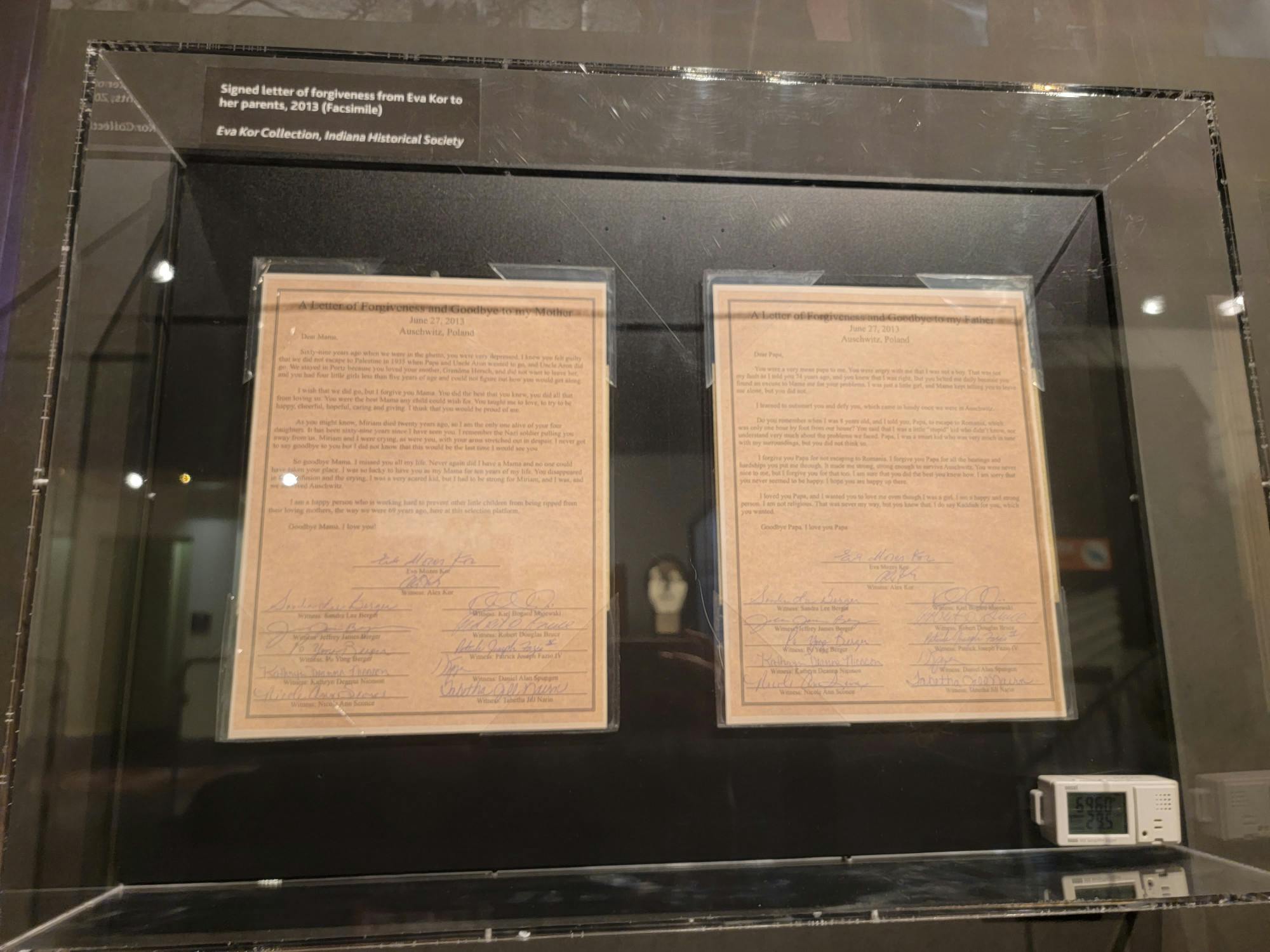
She also spent much of her later activism broadcasting her forgiveness of the Nazis for what they had done to her and her family, including the doctors who were directly responsible for her harm. She announced this forgiveness in front of the former Auschwitz gas chambers to further this point of forgiveness.
“I felt that a burden of pain had been lifted from my shoulders, a pain I had lived with for fifty years,” Kor said. “I was no longer a victim of Auschwitz…I was free.”
An ambassador of forgiveness and an activist until her death, this exhibit shares a glance into Kor's life. Eva Kor lived a life worth remembering, from the severity of the concentration camp to her battles against Jewish hate. A trip to the Indiana Historical Society will be well worth it.
Alyssa Work (she/her) is a senior majoring in Communication Studies. She is also a social media intern; this is her first year on the Campus Citizen team.

